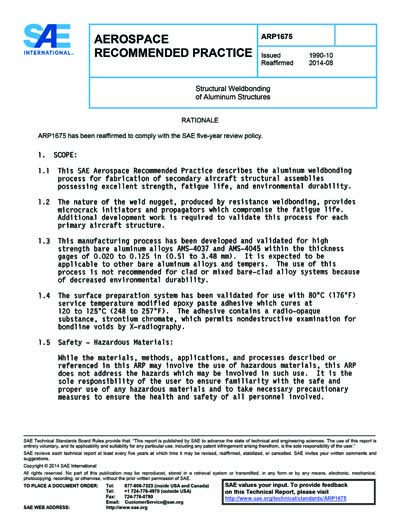Most recent
SAE ARP 1675-1990 (SAE ARP1675-1990)
Structural Weldbonding of Aluminum Structures ( Reaffirmed: Apr 1995 )
This SAE Aerospace Recommended Practice describes the aluminum weldbonding process for fabrication of secondary aircraft structural assemblies possessing excellent strength, fatigue life, and environmental durability. The nature of the weld nugget, produced by resistance weldbonding, provides microcrack initiators and propagators which compromise the fatigue life. Additional development work is required to validate this process for each primary aircraft structure. This manufacturing process has been developed and validated for high strength bare aluminum alloys AMS-4037 and AMS-4045 within the thickness gages of 0.020 to 0.125 in (0.51 to 3.48 mm). It is expected to be applicable to other bare aluminum alloys and tempers. The use of this process is not recommended for clad or mixed bare-clad alloy systems because of decreased environmental durability. The surface preparation system has been validated for use with 80 degrees C (176 degrees F) service temperature modified epoxy paste adhesive which cures at 120 to 125 degrees C (248 to 257 degrees F). The adhesive contains a radio-opaque substance, strontium chromate, which permits nondestructure examination for bondline voids by X-radiography.
Content Provider
Society of Automotive Engineers [sae]






